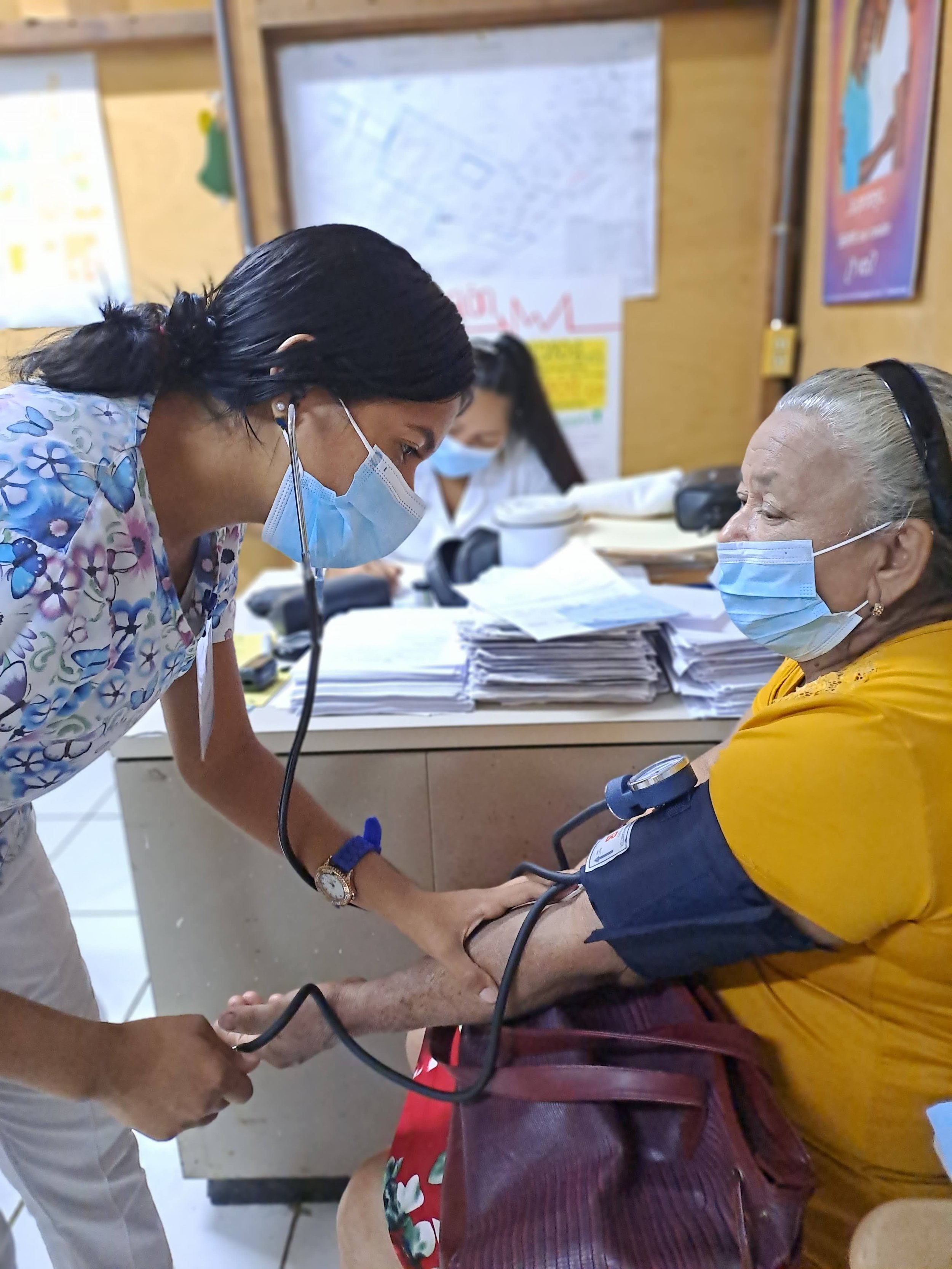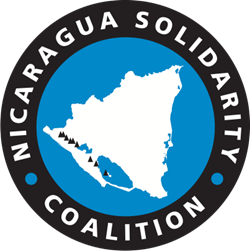
HEALTH CARE
Background
Near the end of the US-backed Somoza dictatorship in 1978, there were only 209 health units in a country of more than 150 municipalities – this includes hospitals, health centers and health posts. After the Triumph of the Revolution in 1979, the new Sandinista government made health care free, even in the midst of the US- funded and managed Contra war and the total economic blockade that lasted nearly ten years with tens of thousands of deaths. The Sandinistas increases health units five-fold; by 1990 there were 1,056 units.
In contrast, over 17 years of neoliberal governments from 1990 to 2006, only 35 more health units were built, the majority of which were in rural areas and sat empty due to lack of personnel and materials. At that time, health care was effectively privatized: even when patients managed to be seen by a doctor, they were given prescriptions for medicines they couldn’t afford. Imports of drugs were in the hands of foreign companies and production of generic drugs was restricted; most local companies that produced generics were shut down.
Patients unfortunate enough to need surgery had to bring their own alcohol, gauze, sutures, medicines, IV fluids and sheets as well as family members who could donate the blood they would need. Laboratory tests, specialized treatments, and surgeries were so expensive that poor families effectively could not access the service. During these years, patients literally died on the street outside hospitals for lack of basic medical care. More people went to the cemetery for lack of food, healthcare and work than had gone to the cemetery from the Contra war.
Universal Free Health Care
The Sandinista government was reelected and the first act by President Daniel Ortega when he took office in January 2007 was to once again declare health care free. Seventeen years later, access to quality health care is no longer the privilege of a few, but a right for all Nicaraguans. This has been achieved through public investment in health infrastructure, an increase in personnel, improved and specialized training, and tireless work to involve communities and families in their own health care.
Nicaragua’s family and community-based health care model has revolutionized the culture of the country’s health care system. Today, it is a more holistic system focused on families becoming active participants in their own health, and relying heavily on a small army of community workers doing everything from mosquito elimination to door-to-door vaccination to health promotion and education.
Infrastructure Investment
Since 2007, when there were only 32 hospitals, the largest public health infrastructure in Central America has been built in Nicaragua. It now has 77 new or remodeled hospitals and a network of thousands of new or remodeled neighborhood health centers and health posts.
Currently there are 182 maternity wait homes around the country for women to spend the last two weeks of their pregnancy near a hospital, resting and being monitored by health professionals before giving birth in the hospital. Generally these are women from rural villages.
A nearly four-fold increase in maternal wait homes has led to 98% of births taking place in hospitals, resulting in a 67.7% decrease in maternal mortality and a 56.3% reduction in neo-natal mortality rates.
A focus on testing all pregnant women for HIV has led to a 98% reduction in mother to baby transmission of HIV; in 2023 there was only one baby in the country born with HIV.
In an effort to see patients who don’t normally go to health centers, Nicaragua’s Ministry of Health (MINSA) also has 80 fully-equipped mobile health clinics. These are made from semi-trucks that have been confiscated in drug busts, and converted into clinics; these mobile clinics provide more than 2 million consults annually.
In the midst of the pandemic, MINSA rolled out the My Hospital in My Community program which sees patients at neighborhood health fairs with orthopedists, cardiologists, gynecologists, urologists and other specialists. Care includes screening for prostate, breast and cervical-uterine cancers. When needed patients are referred to a specialist at a hospital for follow up.
Access to specialized care has drastically changed: there are now 101 centers for people with special needs, 90 natural medicine clinics that especially focus on pain relief, and 34 mental health clinics. More than 331,000 free cataract surgeries have been performed, a program started by the Sandinistas when they were out of power with support from Cuba and Venezuela. There was no support from the neoliberal governments. Services such as chemotherapy and radiotherapy that were once only offered in the capital and for a hefty cost are now offered around the nation for free. Before 2007, many surgeries were only performed by international brigades; now hundreds of child heart surgeries, kidney transplants and spinal surgeries are performed annually by local doctors. In 2022, Nicaraguan doctors became the first in Central America to learn and perform in-utero surgery on fetuses. For example, on a fetus with spina bifida. They now perform fetal surgeries regularly.
Nicaragua has made a long-term financial investment in public health: social program spending in 2023 was more than six times what it was in 2006. In 2022, 58 cents of every dollar the government spent was on social programs, with health care expenditures alone representing 20.4% of the country’s annual budget.
Investment leads to results
Thanks to consistent work by thousands of health care workers on the ground carrying out educational activities, inspection of homes, and spraying for mosquitoes, deaths from malaria have been reduced by 95% since 2006.
Annual door-to-door vaccination campaigns now protect against 19 illnesses instead of just 12, and Nicaragua’s vaccination rate is up from 88% to a full 100% vaccination rate against childhood illnesses.
A free school lunch program has decreased chronic malnourishment in children under 5 by 13.9% and child mortality has been reduced by 58.6%.
Early detection of cervical-uterine cancer is emphasized with nearly four times the number of pap tests as in 2006. Equipping clinics with colposcopy and cryotherapy machines is now 300 compared to just 3 in 2006. This has led to a 35% decrease in cervical cancer mortality, previously one of the biggest killers of Nicaraguan women of child-bearing age. In 2023, Nicaragua vaccinated nearly 100% of girls aged 10-14 (nearly 260,000 girls) against HPV, the virus that causes cervical cancer. Currently in 2024 the girls are receiving their second vaccine. These girls will be totally protected against cervical-uterine cancer!
COVID-19 Response
It is in this context of more than a decade of these revolutionary changes to the health care system that Nicaragua faced coronavirus. When COVID-19 was declared a pandemic, Nicaragua was ready with a healthier population who had access to the best public healthcare in the region.
Nicaragua began preparing for COVID-19 even before its first case of the virus, establishing protocols, equipping hospitals with additional intensive care beds, ventilators and training public health workers. Over 5 million home visits (four per household) by medical staff and trained volunteers were made all over the country to educate about the virus, identify possible cases and update the census.
Unlike other countries, Nicaragua chose not to shut down – with 80% of jobs in micro and small business and agriculture, people need to work each day in order to feed their families. Nicaragua instead encouraged people to go about their daily business safely, teaching handwashing, social distancing and mask wearing. Although these were guidelines and not mandates, these measures were widely adopted by the population. Not only were businesses and markets kept open, but also public schools were open and able to continue the important school lunch program which feeds 1.2 million students daily.
Although Nicaragua allocated funding to purchase COVID-19 vaccines in early 2021, due to other countries hoarding the vaccine, Nicaragua was only able to purchase small amounts of vaccine initially. Because of the lack of vaccines, elderly and people with chronic health issues were vaccinated first. But by November 2021 they began to vaccinate all age groups. Despite this late start and the fact that Nicaragua never implemented a vaccine mandate, the country fully vaccinated 100% of its population over the age of two against COVID-19 by early 2022 and has continued to recommend two booster shots annually. While other countries have experienced a resurgence of COVID-19 seasonally, Nicaragua has not had a significant wave of COVID infections since 2021.
Nicaragua’s policy of keeping the economy open led to its quick recovery from the pandemic: GDP grew by more than 10.3% in 2021 and 3.8% in 2022. This economic recovery, however, did not come at the cost of human life: the World Health Organization reported that Nicaragua had one of the lowest rates of excess deaths during the pandemic. UNICEF has also congratulated Nicaragua on its pandemic response model, saying that unlike countries which chose to lock their population down, Nicaraguan children did not experience higher health risks, poorer nutrition, lower vaccination rates or lower educational outcomes due to the pandemic as was the case in countries where children did not go to school.
(Source: GRUN 2024 unless otherwise noted)
Articles
2023
“The Best Health Care Money Can’t Buy: Nicaragua’s Free Universal System.” NicaNotes, 13 July 2023 by Becca Renk. [Link error. Here’s the correct link: https://afgj.org/nicanotes-the-best-health-care-money-cant-buy-nicaraguas-free-universal-system] neoliberal, Fernando Vélez Paiz Hospital, El Porvenir, family and community health care model, prevention, mobile clinics,
“The Experience of Nicaragua in Managing the Covid Pandemic.” NicaNotes, 25 May 2023 by Coleen Littlejohn. vaccines, free health care, Family and Community Health Model, maternal wait homes, Ministry of Health (MINSA)
2022
“Recent Health Advances in Nicaragua.” NicaNotes, 22 Sept. 2022 by Katherine Hoyt and Nan McCurdy. universal free healthcare model, child malnutrition, food sufficiency, community seed banks, COVID-19 vaccination, “smart” maternal-fetal operating room, malaria reduction
“Good News in the Financial Arena in Nicaragua: January to September 2022.” NicaNotes, 8 Sept. 2022 by Katherine Hoyt and Nan McCurdy. remittances, exports, minimum wage, Adelante Program, COVID-19
“The Privilege of Free Health Care.” NicaNotes, 25 August 2022 by Becca Renk. dengue fever, trickle up economics, pro-poor policies, Community and Family-Based Health Model, “Thanks to God and the Revolution”
“Reflections on Differences Observed Since I Last Visited Nicaragua.” NicaNotes, 11 August 2022 by Marilyn Carlisle. Casa Baltimore-Limay friendship committee, highways, health care, education, agroecology

